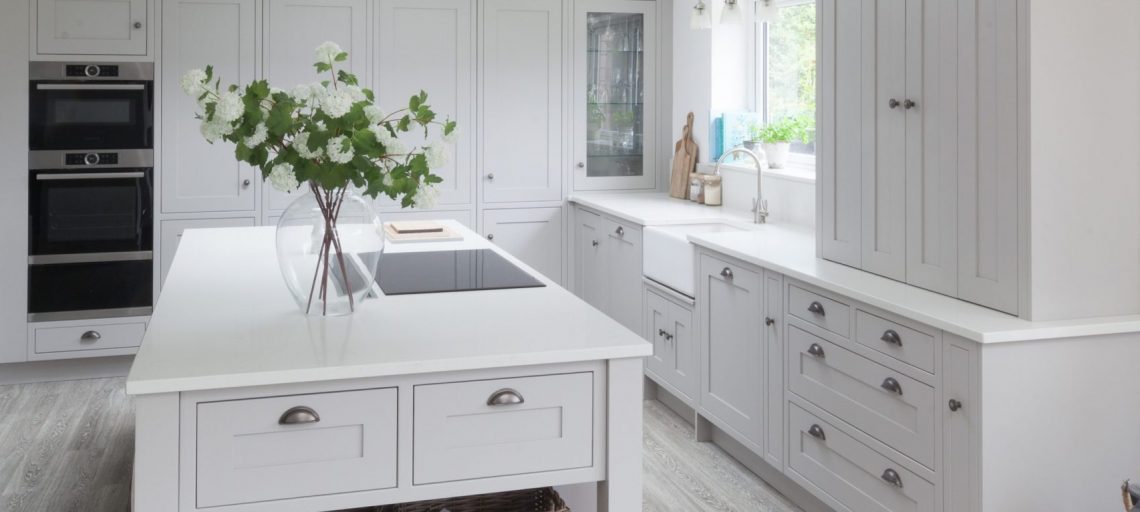Mastering the Kitchen Triangle
- Home
- Mastering the Kitchen Triangle

- Emily Prideaux
- | April 11, 2024
- | Design Ideas
Mastering the Kitchen Triangle
In the realm of kitchen design, there’s a concept that reigns supreme: the kitchen work triangle. Whether you’re renovating your space or starting from scratch, understanding the kitchen triangle and how to create it is key to crafting a culinary haven that’s also practical.
What is the Kitchen Work Triangle?
The kitchen work triangle is a concept that revolves around three key components: the sink, the hob, and the fridge. These elements form the vertices of a triangle, with each side representing a primary work zone: preparation, cooking, and storage. The idea is to minimise the distance between these essential areas, allowing for seamless movement and workflow efficiency.
Factors to Consider When Designing the Kitchen Triangle:
- Space: Ensure there’s enough room between each component to manoeuvre comfortably without feeling cramped.
- Traffic Flow: Keep the triangle free from high-traffic pathways to avoid congestion and interruptions.
- Functionality: Consider how you use the kitchen and tailor the triangle to suit your needs.
- Appliance Placement: Place appliances such as ovens and dishwashers strategically within the triangle to facilitate smooth transitions between tasks.
- Balanced Triangle: Unequal distances between the sink, stove, and fridge can disrupt workflow and create frustration.
Adaptations for Different Kitchen Layouts:
- Galley Kitchen: Optimize the narrow space by arranging the triangle along one wall, maximizing efficiency without sacrificing functionality.
- L-Shaped Kitchen: Extend the triangle along two adjacent walls, ensuring seamless flow between work zones while making the most of the available space.
- U-Shaped Kitchen: Utilise all three walls to create a compact, efficient triangle that minimises unnecessary movement.
Recent Posts
Categories
Archives
- March 2025
- November 2024
- October 2024
- September 2024
- July 2024
- May 2024
- April 2024
- March 2024
- February 2024
- January 2024
- December 2023
- November 2023
- September 2023
- August 2023
- July 2023
- June 2023
- May 2023
- April 2023
- March 2023
- February 2023
- January 2023
- December 2022
- November 2022
- October 2022
- September 2022
- August 2022
- July 2022
- June 2022
- May 2022
- March 2022
- February 2022
- January 2022
- November 2021
- October 2021
- September 2021
- August 2021
- July 2021
- June 2021
- May 2021
- April 2021
- March 2021
- February 2021
- January 2021
- July 2020
- June 2020
- May 2020
- April 2020
- March 2020
- February 2020
- January 2020
- November 2019
- October 2019
- December 2018
- November 2018
- May 2018
- April 2018
- September 2017
- July 2017
- May 2017
- April 2017
- March 2017
